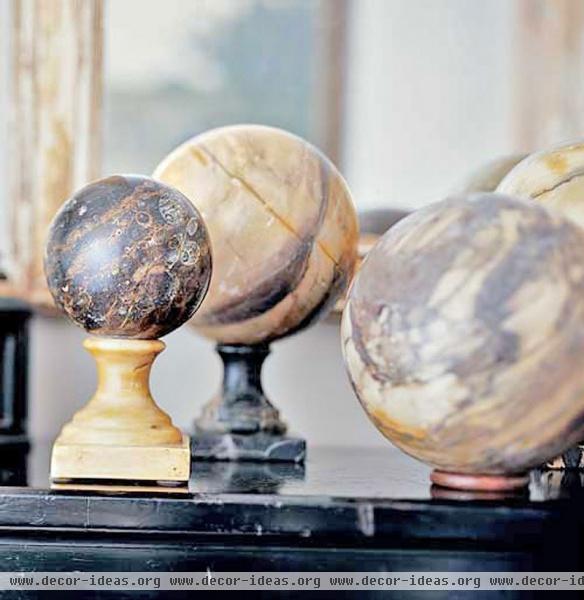KING OF CLASSICS(2)

KING OF CLASSICS
Euphemistically recounting one of the more unsavory features of the derelict property when he bought it, Lee says, "Stray cats had been living here several years, and the hardwood floors were stained." Instead of ripping out the former litter box and laying a new floor, Lee took a more practical approach. "I knew I wanted a black lacquered floor, and that treatment was all that was needed to seal off and conceal the imperfections."
Creating a sense of distinct spaces in the 800-square-foot apartment posed a bigger challenge. "The walls are structural, so nothing could be subtracted, and adding doors was impossible-there's not enough room to open them." Lee's solution: Hinge together architecturally appealing windows as screens. "They give a sense of separation without closing off spaces," he notes.
Because of the visibility between rooms, Lee used color to unify spaces. More important, he used it to unify furniture of different periods and pedigrees. He introduces a brilliant turquoise on the 20th-century dining room pedestal table's glass top. Mounted on the nearby wall, an 18th-century trumeau repeats the turquoise hue on its original painted wood.
Initially, he thought turquoise would be the only color accent in the neutral apartment. (Walls are painted a taupey "English stone.") "But I liked the square shape of some chairs I had in inventory to contrast with the round dining table. I just didn't know about introducing their red cushions." Yet one night in Laguna, he had an epiphany: "I was looking at a painting I owned of a castle, which features red rooftops. I realized it was the piece I needed in the apartment to make the chairs work." Serendipitously, the painting also featured a pageantry of horsemen, making it kindred to the steed-mounted painting of King George III that Lee already had hanging in the apartment's living room. So with the single castle painting, he had connected two themes.
URL: KING OF CLASSICS(2) http://decor-ideas.org/cases-view-id-1233_2.html











